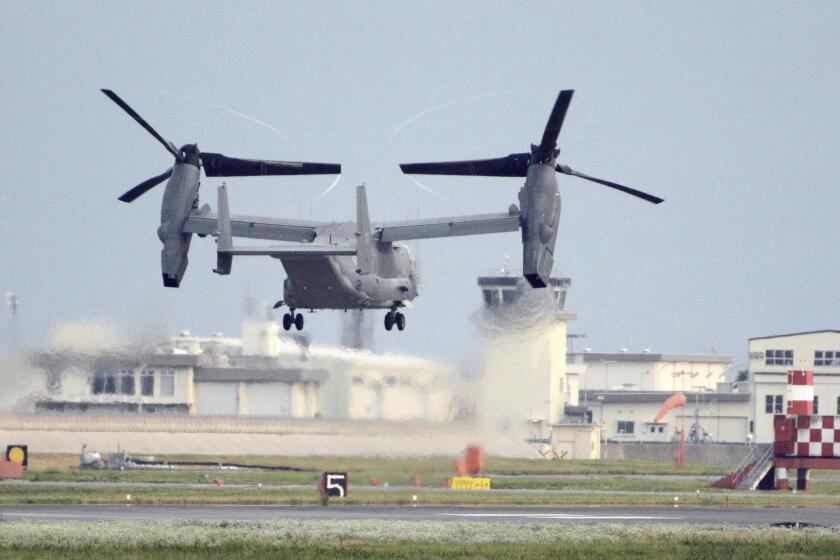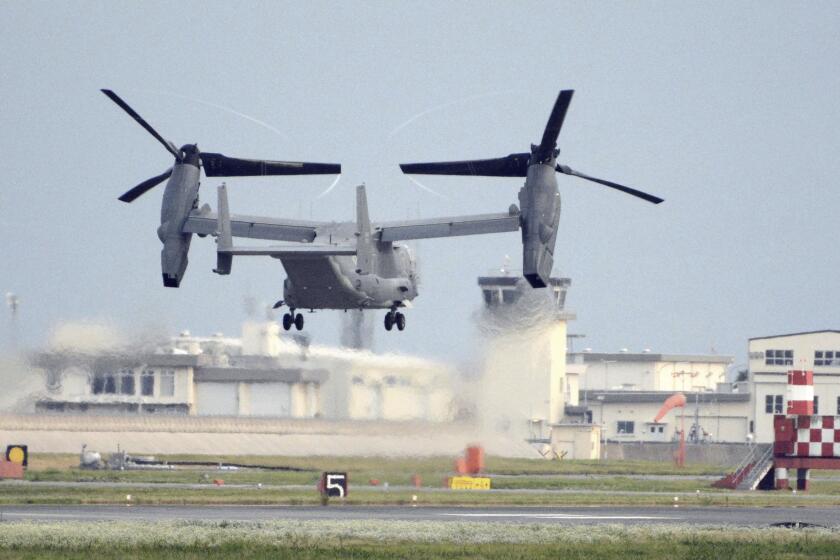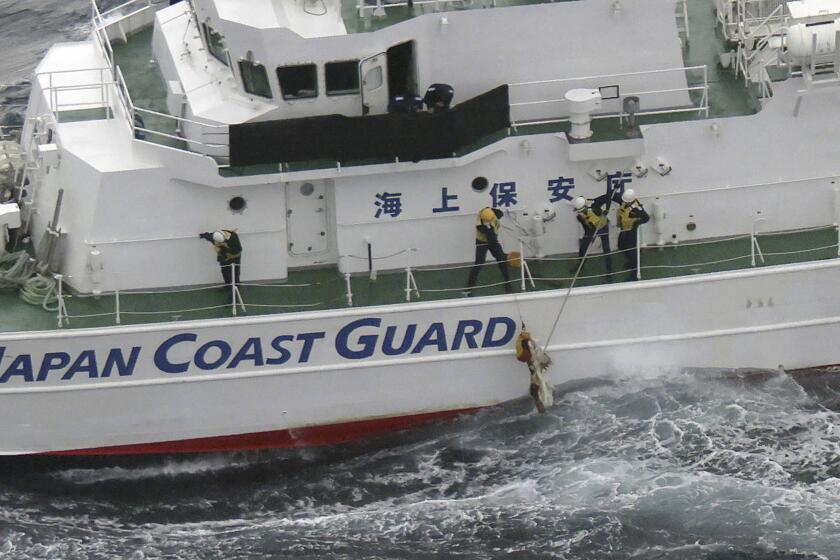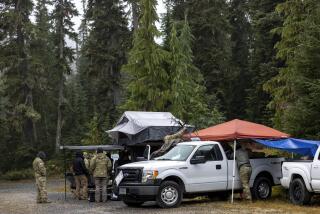Air Force identifies 8 U.S. crew members lost in Osprey crash in Japan
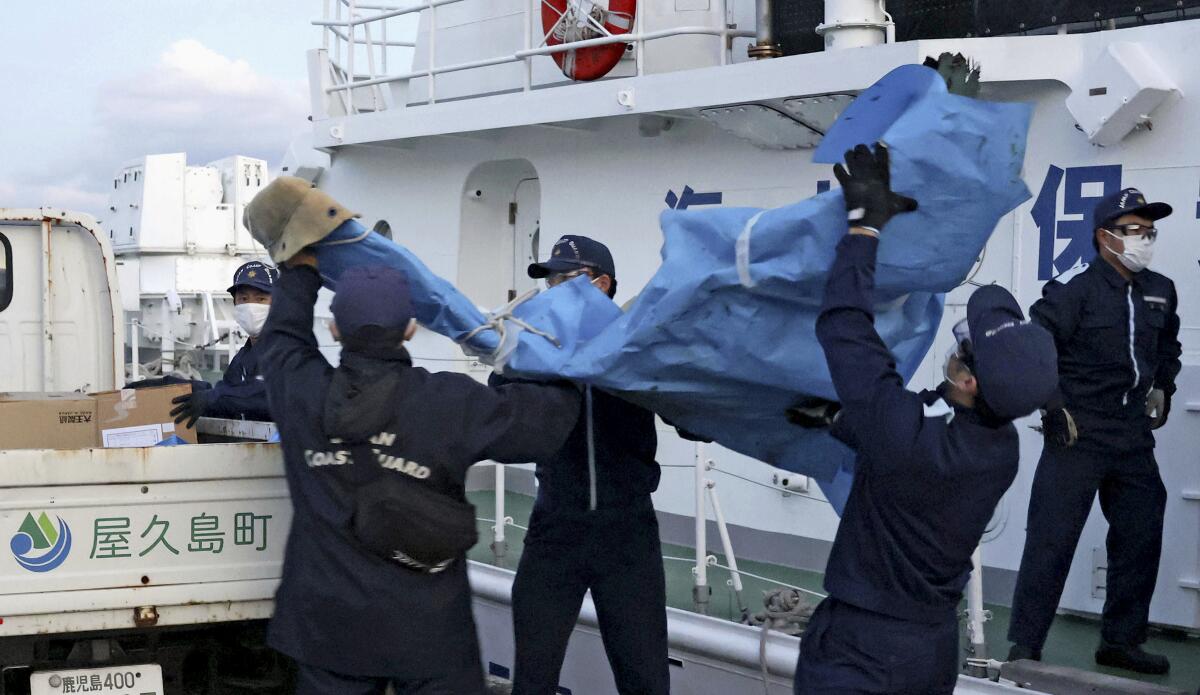
- Share via
WASHINGTON — Air Force Special Operations Command said Tuesday it has identified the eight service members lost when their Osprey crashed off the coast of Japan last week and was now focused on recovering all of their bodies and the aircraft debris.
The CV-22B Osprey crashed on Nov. 29 during a training mission. Ospreys have had a number of crashes, including in Japan, where they are used at U.S. and Japanese military bases, and the latest accident has rekindled safety concerns.
On Monday, the Air Force said six of the eight crew members’ remains had been located. Three of those have been recovered. The two lost crew members were unlikely to have survived and the search for their remains was continuing, the Air Force said Tuesday.
Japan’s coast guard has found a person and debris in the ocean where a U.S. military Osprey aircraft carrying eight people crashed off southern Japan.
“The depth of sorrow is immeasurable,” Lt. Gen. Tony Bauernfeind, who heads Air Force Special Operations Command, said in a statement announcing the names of the crew. “The honorable service of these eight airmen to this great nation will never be forgotten, as they are now among the giants who shape our history.”
The lost crew members were identified as follows.
U.S. Air Force Maj. Jeffrey T. Hoernemann, 32, of Andover, Minn., was a CV-22 instructor pilot and officer in charge of training, assigned to the 21st Special Operations Squadron, 353rd Special Operations Wing, Yokota Air Base, Japan.
U.S. Air Force Maj. Eric V. Spendlove, 36, of St. George, Utah, was a residency-trained flight surgeon and medical operations flight commander assigned to the 1st Special Operations Squadron, 353rd Special Operations Wing, Kadena Air Base, Japan.
U.S. Air Force Maj. Luke A. Unrath, 34, of Riverside was a CV-22 pilot and flight commander assigned to the 21st Special Operations Squadron, 353rd Special Operations Wing, Yokota Air Base, Japan.
The U.S. Air Force says divers have discovered the wreckage and remains of some crew members of an aircraft that crashed off southwestern Japan.
U.S. Air Force Capt. Terrell K. Brayman, 32, of Pittsford, N.Y., was a CV-22 pilot and flight commander assigned to the 21st Special Operations Squadron, 353rd Special Operations Wing, Yokota Air Base, Japan.
U.S. Air Force Tech. Sgt. Zachary E. Lavoy, 33, of Oviedo, Fla., was a medical operations flight chief assigned to the 1st Special Operations Squadron, 353rd Special Operations Wing, Kadena Air Base, Japan.
U.S. Air Force Staff Sgt. Jake M. Turnage, 25, of Kennesaw, Ga., was a flight engineer assigned to the 21st Special Operations Squadron, 353rd Special Operations Wing, Yokota Air Base, Japan.
U.S. Air Force Senior Airman Brian K. Johnson, 32, of Reynoldsburg, Ohio, was a flight engineer assigned to the 21st Special Operations Squadron, 353rd Special Operations Wing, Yokota Air Base, Japan.
Japan has suspended flights of its Osprey aircraft after a U.S. Air Force Osprey based in Japan crashed into the sea during a training mission.
U.S. Air Force Staff Sgt. Jacob “Jake” M. Galliher, 24, was a native of Pittsfield, Mass. His remains were the first to be found.
The U.S.-made Osprey is a hybrid aircraft that takes off and lands like a helicopter but can rotate its propellers forward and cruise much faster, like an airplane, during flight.
Japan has suspended all flights of its own fleet of 14 Ospreys. Japanese officials say they have asked the U.S. military to resume Osprey flights only after ensuring their safety. The Pentagon said no such formal request has been made and that the U.S. military is continuing to fly 24 MV-22s, the Marine version of Ospreys, deployed on the southern Japanese island of Okinawa.
On Sunday, pieces of wreckage that Japan’s coast guard and local fishing boats have collected were handed over to the U.S. military for examination, coast guard officials said. Japan’s military said debris it has collected would also be handed over to the United States.
More to Read
Sign up for Essential California
The most important California stories and recommendations in your inbox every morning.
You may occasionally receive promotional content from the Los Angeles Times.
